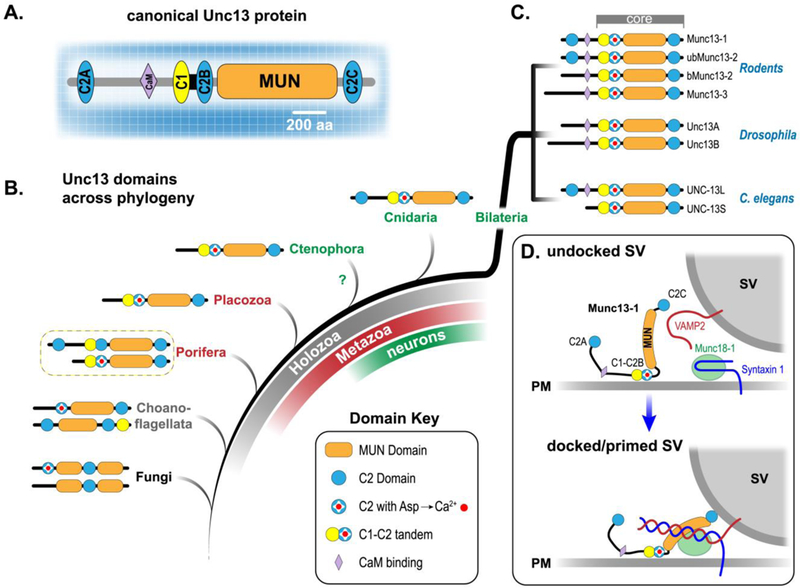Figure 1.

Domain organization and evolution of Unc13 proteins. A. Cartoon of the canonical Unc13 protein family member (e.g. mouse Munc13–1, worm UNC-13L, or human Unc13A). Scale bar indicates relative number of residues comprising each of the protein domains. B. Heuristic evolutionary organization of representative Unc13 homologs from several metazoan phyla as well as unicellular organisms. Unicellular organisms in gray/black, early branching animals lacking true neurons and muscle in red, and animals possessing neurons in green. Holozoa encompass metazoa and their closest unicellular relatives such as choanoflagellates. This Unc13 distribution across Holozoa suggests that the ancestral protein arose prior to the emergence of nervous systems. The relative phylogenetic position of Ctenophora is not clear [80]. Here, Ctenophora are grouped with other animals possessing nervous systems (green). C. Several isoforms of neuronal Unc13 are shown for mouse (top), fly (middle), and worm (bottom). D. Cartoon depicting a possible role for Munc13–1 and Munc18–1 in catalyzing SNARE assembly and synaptic vesicle (SV) docking and priming. Note that several critical presynaptic proteins such as SNAP25, Synaptotagmin 1, Rab3, and numerous AZ proteins have been omitted for clarity.
